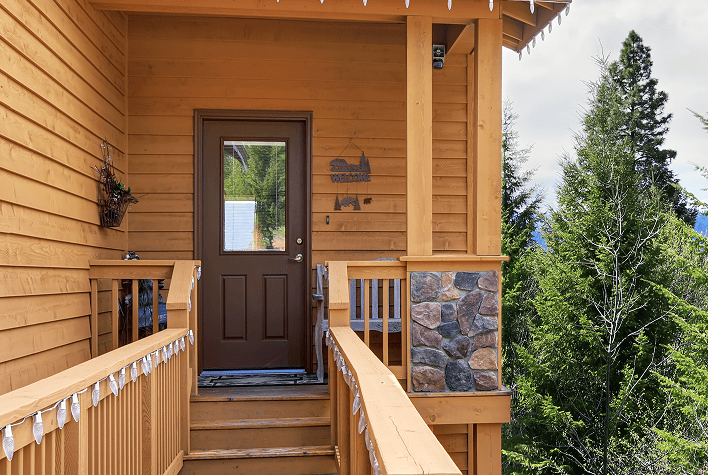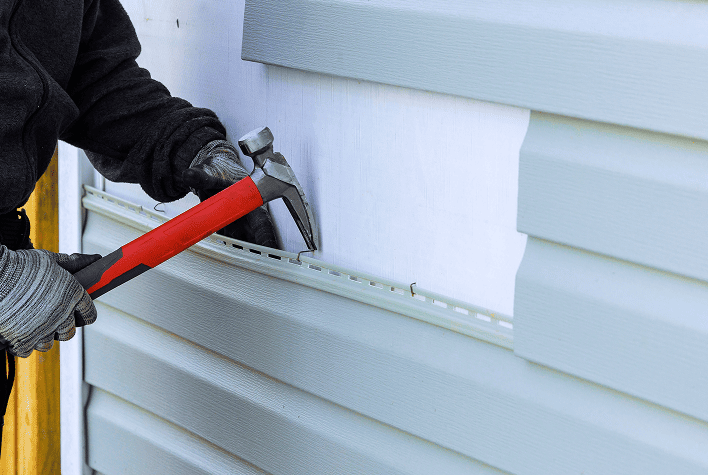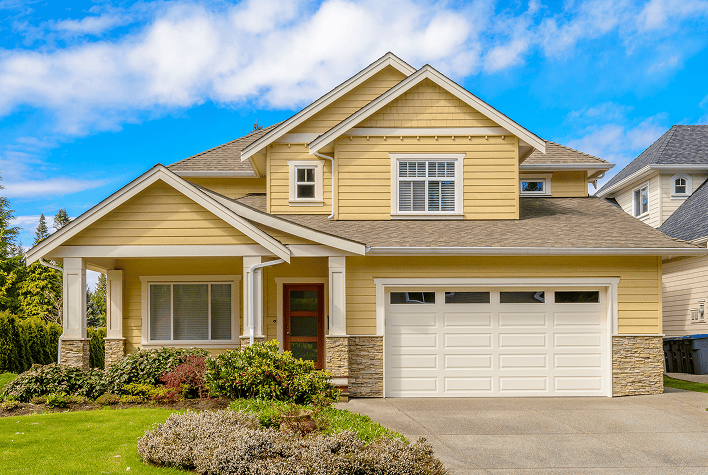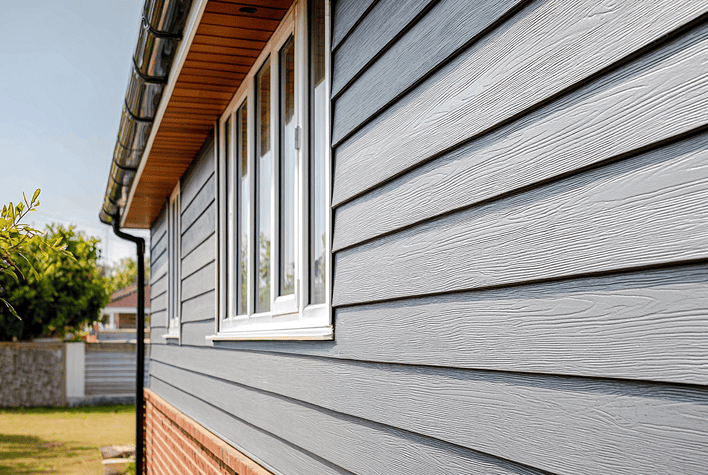
Key Points
- Wood siding adds timeless beauty and warmth to any home with its natural grain and classic appeal.
- It’s eco-friendly, biodegradable, and provides strong insulation for improved energy efficiency.
- The final cost depends on factors like wood type, style, home size, and labor rates.
- Regular maintenance, such as painting or staining, is essential for longevity and protection.
- On average, homeowners spend between $17,350 and $69,400.
Wood Siding: Pros and Cons
Many homeowners have preferred wood siding for their homes for centuries. However, like any building material, it has its strong and weak points. Here’s a closer look at them.
TABS
What Factors Affect the Wood Siding Prices
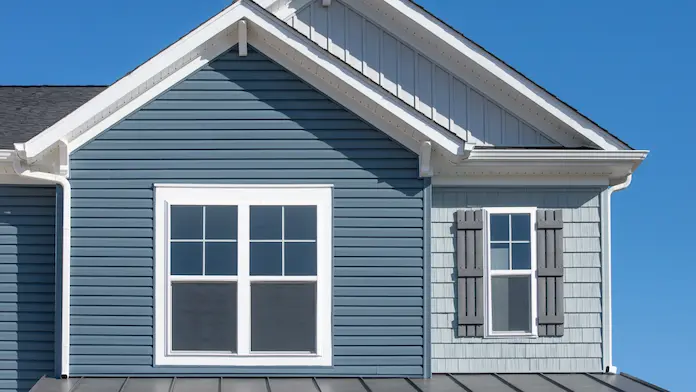
Type of Wood
The chosen type of wood significantly impacts the project cost. Different wood species have varying levels of durability, appearance, and price. Here are some possible options:
TABLE
Siding Style
Wood siding comes in various styles, each affecting the cost differently:
Wood Grade
The wood grade determines the quality and durability of the siding. Higher grades are more expensive but offer better longevity and appearance:
- Standard Grade$3.50 - $12.50 per square foot
- Premium Grade$8.00 - $23.50 per square foot
Size and Complexity of Your House
The larger your home’s exterior, the more siding material and labor will be required, leading to higher costs. Additionally, complex architectural features like dormers, gables, and multiple stories complicate the installation and increase labor costs.
Finishing and Treatment
Wood siding must be painted or stained to protect it from moisture, insects, and UV damage.
Removal of Old Siding
If you’re replacing existing siding, you may need to factor in the cost of removing and disposing of the old material. This process can add $1,000 to $3,000 to the total project cost, depending on the size of the house and the type of old siding.
Condition of the House
If your home has structural damage or issues like mold or rot underneath the old siding, you may need to repair it before installing the new siding. These repairs can add anywhere from $500 to $5,000 to your total project cost, depending on the severity of the damage.
Labor Costs
Labor is another major factor that affects the overall expense. The complexity of the installation, house size, and local labor rates play a role in determining the final cost. On average, labor for wood siding installation ranges from $2 to $5 per square foot. Homes with more intricate designs, such as multiple stories or irregular shapes, will have higher labor costs to install lap siding due to the extra time and effort required.
Geographic Location
Labor costs and material availability vary by region, impacting the overall price. In areas with higher living costs, expect labor and materials to be more expensive. Urban areas tend to have higher rates than rural areas. The difference can be significant, with costs in some regions being up to 20% higher.
Season
Siding installation during peak season (usually summer) may cost more due to higher demand. Off-season installations might offer discounts.
Additional Costs
Don’t forget to factor in additional engineered wood siding costs such as:
Install a Wood Siding Yourself or Hire a Pro?
TABS
When hiring a professional, it’s essential to choose a reputable contractor with experience.
Homebuddy.com is a service for finding a wood siding professional. It connects homeowners with qualified contractors in their area, allowing users to compare multiple professionals based on reviews, qualifications, and pricing. This platform simplifies the process of finding the right contractor for your siding project, ensuring that you can make an informed decision based on real homeowner experiences.
Conclusion
Replacing wood siding is a significant investment, but it can greatly enhance your home’s appearance and value. Costs vary based on factors like material type, labor, and location.
Whether you choose to DIY or hire a professional, careful planning and research will help ensure a successful wood siding replacement project. By weighing all the factors discussed in this article, you’ll be well-equipped to make an informed choice that balances your budget with your home improvement goals.
Frequently Asked Questions
How long does wood siding last, and what maintenance is required?
Wood siding can last 20 to 40 years with proper maintenance. Regular maintenance includes painting or staining every 3-7 years, inspecting for damage, and treating for pests and rot.
Can I install new wood siding over the old siding?
In some cases, new wood siding can be installed over old siding if the existing siding is in good condition and properly prepared. However, it’s often recommended to remove old siding to inspect and repair any underlying damage.
What is the best wood for siding?
Cedar is one of the best choices for wood siding because of its natural resistance to rot, decay, and insects. Redwood and cypress are also durable and provide excellent longevity. Cedar siding cost per square foot is higher compared to more affordable woods like pine, the latter requires more frequent maintenance and treatments to prevent moisture damage.
Can I paint or stain my wood siding to change its color?
Absolutely! One of the benefits of wooden siding is its universality. You can paint or stain it to match your desired color scheme and refresh your home’s exterior whenever you like.
Is wood siding a good insulator?
Yes, wood is a natural insulator, helping to regulate your home’s temperature and potentially reducing energy costs. However, the insulation value can vary depending on the type and thickness of the wood.
How often should I repaint or re-stain my wood siding?
The frequency of repainting or re-staining depends on the type of wood, climate, and exposure to the elements. Generally, it’s recommended to repaint or re-stain every 3 to 7 years to maintain its appearance and protect it from damage.
Can I install wood siding myself?
Yes, installing wood siding yourself can save money, but it requires good carpentry skills and experience. You’ll need the right tools and knowledge of local building codes. While this approach can be rewarding, hiring a professional ensures the job is done quickly and with fewer risks of mistakes.
